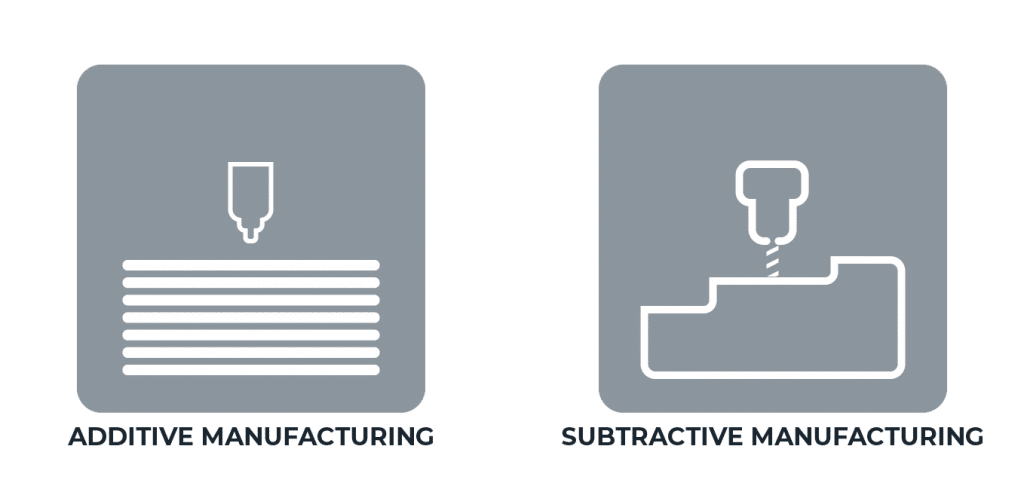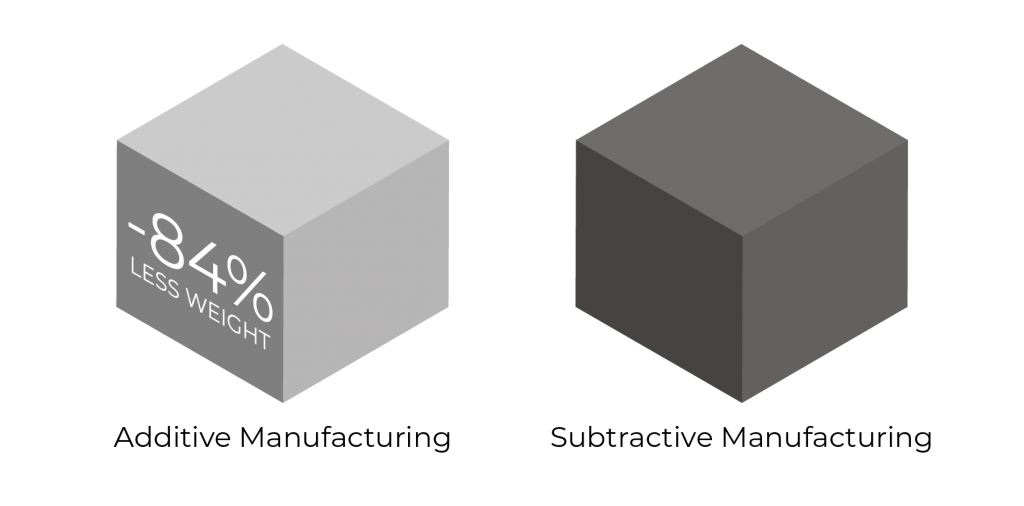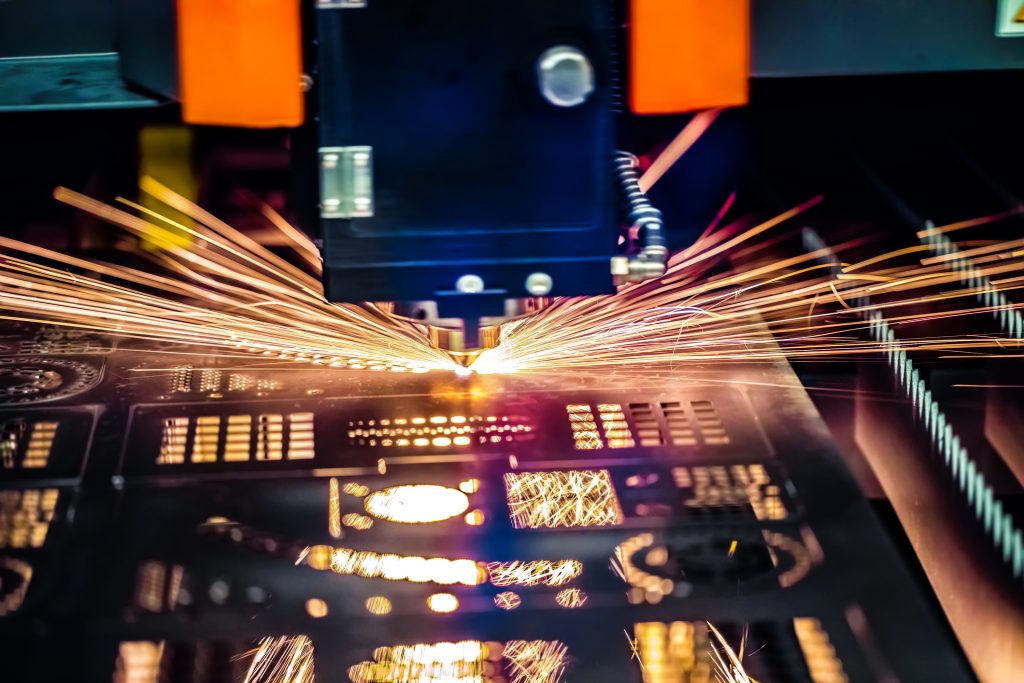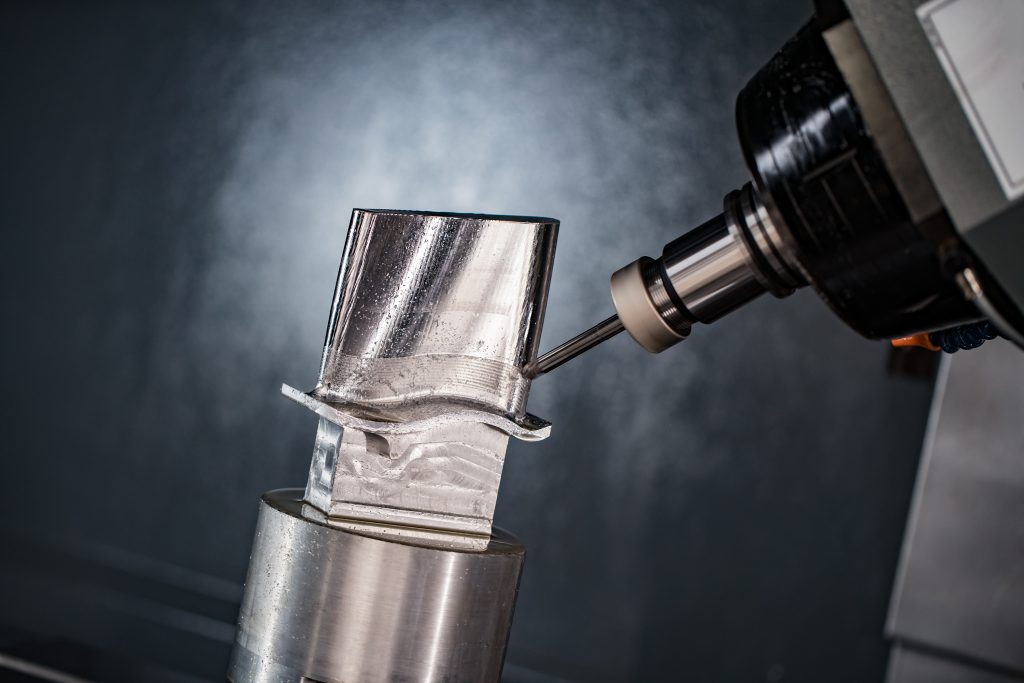What is Additive manufacturing

Additive manufacturing technologies describe the technical process of producing products via adding layers on top of other layers to create a 3D object. A 3D model is created by using software called Computer Aided Design (CAD).
After designing the potential model, the part is optimized for the manufacturing process and sent to the printer.
A 3D printer will read the given data from the software and will start to create the object by printing multiple layers using raw materials.
Materials include powders (Selective Laser Sintering), liquid (Stereolithography), plastic filaments (Fused Deposition Modelling) and metals using Metal Binder Jetting.
Moreover, the objects being created with additive manufacturing technologies are used as prototypes, functional models and direct fabrication.
These objects are fabricated to target certain industries such as medical care, fashion, automotive, aerospace and dental industries.

These industries use additive manufacturing for medical implants, fashion products, to make automobile parts, end use aircraft products and dental restorations.
Additionally, there are growing use cases where additive manufacturing is being used, from other technology fields, to standard tooling for manufacturing factories.
Additive manufacturing advantages
The advantages of using additive manufacturing is it converts ideas into objects easily, having the possibility to obtain lighter products, saving time and reducing costs such as only needing relatively cheaper equipment.
The additive manufacturing process helps to save time because it skips the process of ordering a prototype from another company or requiring multiple operations to produce a complex object.
Furthermore, a prototype can be obtained within a few hours depending on the size and complexity.
Another advantage is the weight of the product, the product can be up to 84% lighter than a product that has not been made using additive manufacturing technologies while maintaining the same strength.

The weight advantages are due to the nature of the construction process and furthermore , the control of the building process allows for hollow objects that are very difficult to produce using subtractive processes without compromising the structure of the object.
Additive manufacturing disadvantages
One key disadvantage of additive manufacturing is currently, the cost to mass produce products is limited.
Advances are being made in material science to meet strength similar to subtractive manufacturing processes but the production process is limited to short-run production runs.
Materials
It is possible to use a variation of materials for additive manufacturing products, such as thermoplastics, metals, ceramics and biochemicals.
Thermoplastics are the most used materials by manufacturers currently due to them being easier to work with than other materials. When producing metallic parts, this is usually limited to laser-based methods.
Ceramics are also used for additive manufacturing, variations that fall under ceramics are tricalcium, zirconia and alumina.
Biochemicals are mainly used in healthcare to produce 3D printed models using materials such as silicon.
One example field in the medical industry that uses such materials is orthopaedic clinics, where bone models are used to practice for surgery.
What is Subtractive manufacturing

Subtractive manufacturing is the process where products are made by cutting sections out of a hard block of material or via injection moulding. In order to cut this material out a computer numerical control machine (CNC) is used.
For injection moulding, the process involves melting the material, creating a mould that then the desired object is cast in. This is both for plastics such as the case in bottle manufacturing, while metallic process known as Die Casting can create a variety of parts for any industry.
A CNC machine has the necessary tools and features to cute the materials out of the block and is able to cut in three dimensions. Another method that is used to cut the materials out of the hard block is via using a laser known as Electron Beam Melting (EDM).

Subtractive manufacturing advantages
The advantages of computer numerical control are that the machine provides smoother touches and more strength to the objects than additive manufacturing.
Another characteristic of additive manufacturing is that the 3D products are made by injecting a thermoplastic material into moulds.
The moulds tend to be made from aluminium, wax or sand and this speeds up the injecting material process is the technology that is used to create the molds.
Furthermore, most industries use moulds for their production process when creating plastic-based products.
In addition, these processes are relatively more cost-effective when scaled. The cost of raw materials, such as plastics which are produced as pellets are low cost affording manufacturing companies the option of purchasing in bulk.
Subtractive manufacturing advantages
A weakness of the machine is that it takes much more effort and time to set-up the machine, program the machine and then finally to create the object.
Additionally, subtractive manufacturing is expensive to use for small product runs and it is better to use when a significant amount of objects are made to reduce the cost of the machine through economies of scale.

Experience the high 3d printing quality of the Bolt Pro. Request a print sample for FREE now!
Do you want to know how 3D printing can HELP you and your business? Talk to our experts about a FREE, PERSONALIZED solution suitable for your situation!
The post Additive manufacturing vs Subtractive manufacturing appeared first on Leapfrog 3D Printers.

